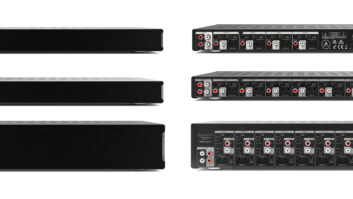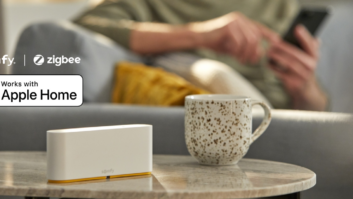As befits a market leader and sales powerhouse, Apple has the luxury of not depending on industry events such as CES, IFA, Mobile World Congress, or CEDIA to make its periodic product and system updates and introductions. Like the proverbial “300-pound gorilla,” it can do what it wants, though the schedule for announcements is typically three times a year. On and immediately after each of these events, there is the general and “fan-boy” press coverage, but getting down to what it all means for our specific customer base takes a bit more thought.
Thus, albeit a week after the event, here are some thoughts and applications centering on the news from Apple’s March 21.

For the most part, what was said was expected. A new iPhone, the “SE,” that combines the 4-inch screen of the older iPhone 5 and 5s generation models with innards that, exclusive of some higher-end functions, is identical to the current iPhone 6S/6S Plus models. Thanks to the latest A9 processor, it puts a powerful feature set in a much smaller form factor. At first glance, it is an interesting and cost-competitive choice for those with smaller pockets or purses who do not need a larger screen.
The second major product announcement was the unveiling of an iPad Pro model with a 9.7-inch screen that is obviously more compact and lighter than the original iPad Pro’s 12.9-inch screen. Need something that works on the job with design-heavy programs? This is a bit lighter in your hands and on your budget. Nothing surprising with that.
Rounding out the major end user-centric announcements (other than some new Apple Watch bands) was iOS 9.3. This is a mid-level refresh, with a more extensive upgrade to an “iOS 10” likely to come at the WWDC in mid-year.
Check the blogs and news reports for more on those announcements. My goal here is to give you some thoughts on what all of this means to you in the custom integration channel.
While the small form factor of the SE may be appealing, the broader trend in phones is to go a bit larger. Indeed, for my personal phone, I recently went from the 4-inch screen of an iPhone 5S to the newest Nexus 6P and its 5.7-inch AMOLED screen, supplied by Huawei, its manufacturer. Having gone big myself (and passing my iPhone 5S down to another family member), I’ve come to enjoy the larger screens.
So why, other than size and cost, would a 4-inch screen phone have any appeal? The answer may be right in our hands. With the smartphone and associated apps becoming the control surface of choice for entertainment and home control via IoT, one of the tasks that you face is to make certain that every phone in the residence has the appropriate apps, and that a phone with those apps is there when someone needs to change or control something. What happens if guests are over and the host steps out to take a call? How do those in the theater or any other room control the source, dim, or raise the lights and blinds, or adjust the volume?
With a price that starts at $399 for a 16 GB model without carrier time-payment plans, you can suggest that an SE, either with a SIM card for phone use or without (to avoid additional monthly charges) you have an easily programmable controller. An interesting addition would be to turn on iOS 9.3’s “Night Mode” to make using the phone as a remote easier on the eyes in a darkened room.
It’s pricey, but still appealing. However, along with the option of Android-based phones, presuming that the required apps are available, the iPod Touch remains an even more price-competitive option for this use. Yes, it has an older processor, less capable cameras, and no Touch ID. But, at $199 for the 16 GB model, this “phoneless iPhone” is perhaps an even better choice for a 4-inch screen iOS device.
That brings us to the new iPad Pro with a 9.7-inch screen. While expensive at a first look, given the features and screen resolution, it does make an interesting option for on-the-job presentations, blueprint viewing, and similar. It’s a compelling product, but when you add up the cost of additional memory, covers, and keyboards, and the limitations of no built-in USB port or card reader, the cost and complications may not make it worth it unless you are a true Apple ecosystem adherent. Products such as the Microsoft Surface 4, Lenovo Yoga, or Carbon X1, particularly with their 6th Gen Intel processors, are very cost-competitive to both iPad Pro models for something that Apple presenters insisted during the March 21 event were laptop replacements. All three of those competitors have a “fold-over-backward” capability that enables functionality as a tablet or laptop.
For me, given the cost involved, I just bought a Dell XPS 13. No, it doesn’t fold into tablet mode, but with an incredible QHD+/3200×1800, 13-inch touchscreen, 16 GB RAM, and a 512 GB SSD, it didn’t set me back more than $100 or so more than the larger iPad Pro with twice the drive size and very high-end build quality and materials. I mention this as a reminder that whenever announcements from ANY brand come out, at least look at the available alternatives first. Don’t just jump in based on the brand name.
What Was Not Said by Apple: Much has been made, and with very good reason, of the genuine medical advancements made possible by ResearchKit and the new CareKit. But other than emphasizing the need on your part to expand, strengthen, and harden a residence’s home network to accommodate these features, there appeared to be nothing else to be added. For the most part, these applications use the phone’s internal sensors, cameras, and GPS in conjunction with the phone as a data, voice/video, or telemetry device. Despite these benefits, not much appears to be involved for us, as opposed to the end user and their medical professionals.
While much was correctly made of CareKit and ResearchKit, there was absolutely no mention of any devices or functionalities for HomeKit or for IoT communication either with the iPhones or iPads themselves or as a part of the iOS 9.3 upgrade. I wouldn’t interpret that as a change in emphasis, but rather that Apple may view this as something that is already “there” and not in need of an update.
Remember, once the “bones” of the system are in the OS, and since Wi-Fi and Bluetooth are at the latest standard levels, this becomes a matter for third-party devices, apps, and folks such as yourself. Yes, it would be nice to have seen Apple give at least some exposure to HomeKit and its capabilities with iPhone, iPad or Apple Watch, but at the end of the day that is something you have to present directly to clients and prospects.
Without new main-line iPhones and iPads, there was no expectation that there would be anything about NFC, wireless charging, eliminating the 3.5-millimeter audio jack, and using the Lightning connection for headphones. Remember, that is something that typically happens with the new OS X and iOS details at the WWDC and the rumored “iPhone 7” later in the year. Yes, some of the omissions were in areas where we trade, but other than as noted this wasn’t an Apple event “for us.”
Thus, when clients ask about what they need to know about the latest Apple announcements, perhaps the best response might be “Just incremental product introductions. Nothing unexpected. Check with me in June, and then in September for their announcements on phones, pads, Macs, and watches that might be something we should talk about.”
At least here, that seems to be the case.







